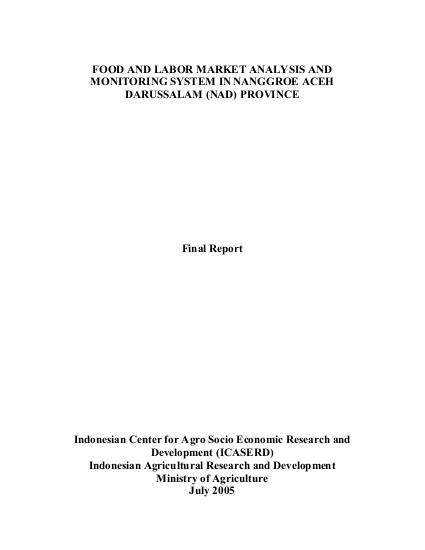
Since the tsunami hit Aceh and North Sumatra in December 2004, the World Food Program (WFP) has been assisting the affected population in Nanggroe Aceh Darussalam (NAD) with food aid in collaboration with donors, NGO’s and the Indonesian Government. It is likely that the continued relief/assistance, including food, will be needed until major infrastructure and housing projects are complete. As the initial emergency subsides, however, WFP is cooperating with the Government to formulate a strategy for supporting rehabilitation and reconstruction in Aceh. There is a perceived need for the continuation of humanitarian assistance until reconstruction is complete. As a result of the tsunami, much of the food security analysis undertaken by WFP for Aceh in the pre-tsunami period in 2004 became outdated. This is due to the major changes in vulnerability and local food production that resulted from the crisis as well as the changes in food availability and food access as a result of the massive influx of assistance, both in kind and in cash. As a result, a food and labor market analysis was undertaken by an independent research institute [Indonesian Center for Agro Socio Economic Research and Development (ICASERD)] to inform WFP’s decision about the appropriate scale and scope of food-based programming in Aceh, beyond meeting immediate relief needs.
